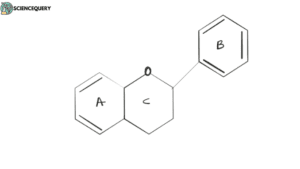
Introduction
We are studying a lot about flavonoids and alkaloids in food and their health benefits in day-to-day blogs. Today with the concept of superfoods getting more and more prominent so are the secondary metabolites present in them. Secondary metabolites are the main important components behind each health benefits and medicinal properties of the plants.
Types of plant secondary metabolites
Plants have basically two types of metabolites namely Primary metabolites and Secondary metabolites. Primary metabolites are mainly used for the photosynthesis, growth, development, and respiration of plants. Secondary metabolites accumulate in plants and respond as a defense mechanism of the plants.
What are secondary metabolites?
Secondary metabolites or Phytochemicals (Plant chemicals) are the natural products or plant constituents which are responsible for the medicinal properties of plants. There are thousands of secondary metabolites. some plants are classified on the basis of secondary metabolites found in them (1).
Types of plant secondary metabolites and their medicinal properties
Three major groups of secondary metabolites
- Flavonoids
- Alkaloids
- Terpenoids
1. Flavonoids

These are polyphenolic compounds comprised of 15 carbons with two aromatic rings connected by a three-carbon bridge. Subtypes of flavonoids are (7).
- Flavonol: Most widely distributed flavonoid. Examples are myricetin, quercetin, isorhamnetin, and kaempferol.
- Flavone: Mainly found in herbs like parsley and celery etc. The structure is almost similar to flavonols. Examples are luteolin, and apigenin.
- Isoflavone: Mainly distributed in leguminous plants. Examples are genistein, daidzein, etc.
- Anthocyanidin: mainly in fruit and flowers therefore responsible for color. Helps in plant protection. Examples are Cyanidin, delphinidin, malvidin, etc.
- Flavanone: Mainly found in citrus fruits. Examples are naringin, neohesperidin, etc.
- Flavan-3-ol: complex flavonoids. Examples are catechins, epicatechin, tannins
Flavonoids are widely distributed throughout the plant kingdom. High concentration mainly in the leaves and fruit skin.
The major function of flavonoids in plants
- Helps in protection against UV radiation
- Pigmentation of leaves and fruits. Stimulation of nitrogen fixation
- Defense mechanisms against diseases caused by microorganisms.
The major function of flavonoids in humans
- Flavonoids reduce the risk of cancer due to antioxidant and antimutagenic properties
- The anti-inflammatory property of flavonoids helps in treating many diseases related to inflammation.
- Anti-carcinogenic properties of flavonoids are useful in the protection of the heart and cardiovascular-related problems.
- Flavonoids like catechins act as insulin receptor and, therefore, helps in combating diabetes which is a major lifestyle-related issue nowadays.
- Flavonoids also help in combating neurodegenerative problems thus helpful for Alzheimer’s and Parkinson’s patients.
2. Alkaloids

In simple words, alkaloids are a group of chemical compounds having an alkaline nature and heterocyclic nitrogen-containing basic compounds of plants (2). These are bi, tri, and tetracyclic derivatives of the molecule quinolizidine. So far more than 12,000 alkaloids have been discovered. They are bitter in taste and medicinally important. Alkaloids are used in many pharmaceutical companies for the preparation of drugs like narcotics, morphine, atropine, stimulants, etc. Alkaloids are mainly divided into three categories (4).
- True alkaloids: mainly derived from amino acids. Highly reactive in nature and bitter in taste. Forms of water-soluble crystalline salts. Examples are Atropine, cocaine, ajmalicine, quinine, etc.
- Protoalkaloids: These are those alkaloids whose nitrogen atom is not a part of the heterocyclic structure. They are simple in structure examples are hordenine, mescaline, and yohimbine.
- Pseudoalkaloids: Not true alkaloids and are mainly derived from amino acid pathways. Examples are aconitine, caffeine, theobromine, etc.
The major function of alkaloids in plants (3)
- Defense mechanism against bacteria and other microorganisms.
- Helps in plant metabolisms and catabolisms
- Storage and reservoir of nitrogen.
- As growth regulators in plants. It also helps as a growth stimulator and inhibitor.
The major function of alkaloids in Humans
- Alkaloids are good in antioxidant, anti-inflammatory, and cardioprotective activities.
- Ajmaline an alkaloid is used as an antiarrhythmic drug.
- Codeine for cough and as an analgesic
- Quinine for antipyretic and anti-malaria
- Vinblastine for antitumor
Terpenoids

Terpenoids are the volatile substance that gives plants and flowers their unique fragrance, this is the largest and most diverse group of secondary metabolites found in plants. Therefore terpenoids are hydrocarbons of plant origin having (C5H8(n as well as oxygenated, hydrogenated, and dehydrogenated derivatives (5). Classification of terpenoids is mainly dependent upon the number of (C5H8) in a structure. Different terpenoid classes are as follows (6).
- Acyclic terpenoids: Have a basic open structure. Myrcene, citral, and geraniol are the main examples.
- Monocyclic terpenes: Have one ring structure. Examples are limonene and Menthol.
- Bicyclic terpenoids: Have two rings in their structure. Thujane and Crane are examples.
- Tricyclic terpenoids: have three rings in their structure
- Tetracyclic terpenoids: Have four rings in the structure.
Similarly, there are monocyclic diterpenoids acyclic diterpenoids, sesquiterpenoids, and so on.
The major function of Terpenoids in plants
- Terpenoids are important for normal growth and development.
- Specialized chemical interaction and protection from biotic and abiotic environments.
Major functions of Terpenoids for humans
- Production of biofuels also uses terpenoids nowadays.
- For pest controls
- Terpenoids are also important for pain-relieving medicines.
- Some terpenoids are potential analgesic and anti-inflammatory.
